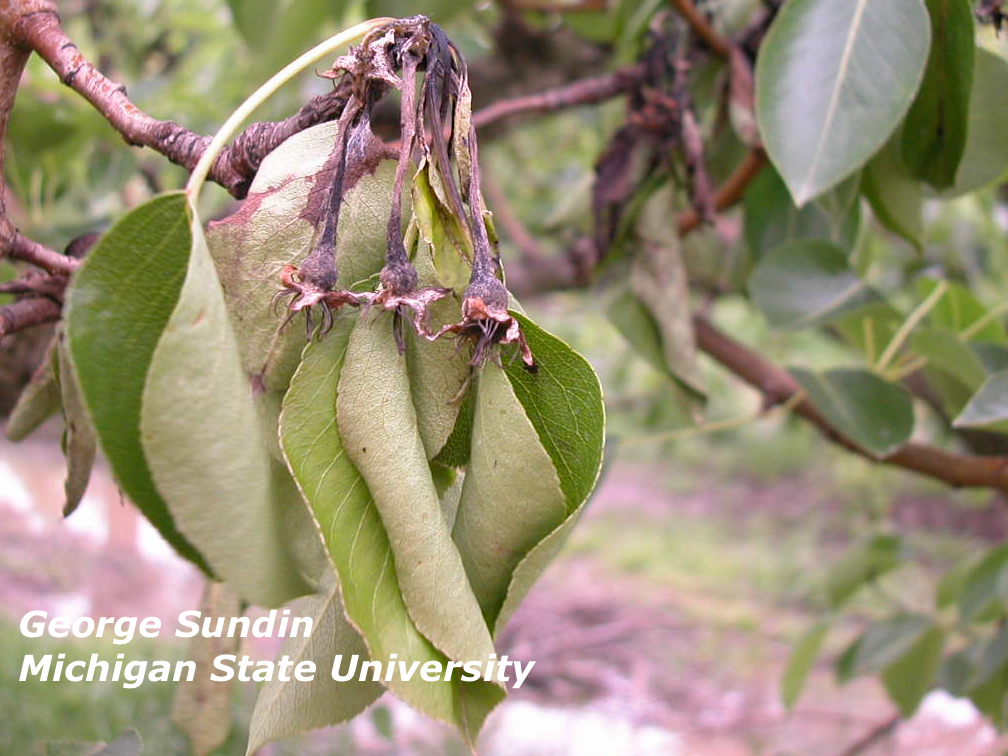
At this point, they tunnel through the skin, leaving a scar at the base, and bury themselves in the soil to hibernate. These insects lay eggs in the developing fruit, and they hatch and live in the core until fall. This is typically an indicator of the apple sawfly. Your fully ripened fruit has a ribbon scar across the skin. Natural aphid predators like ladybugs can also help keep populations in check. Your best option is to monitor your trees closely and spray insecticidal soap on the site of any outbreaks. There’s not much you can do once you see the damage, so early control is critical. This is often a sign that rosy apple aphids feasted on the young fruits in the spring, which deformed and stunted their growth. The trees have curled leaves and produce only stunted fruits that aren’t fully formed at the base Apple leaf damage caused by rosy apple aphids in spring. You can spot treat the infected areas with neem oil or insecticidal soap, or prune out the infected limbs altogether. While these insects aren’t likely to cause much damage to your tree on their own, they encourage other infections like canker that can cause more severe issues. This sounds like a woolly aphid infestation, especially if the fluff is restricted to stems and branches. Wooly aphid damage on an apple tree trunk. The apple branches have developed white fluffy areas. Aphids on their own aren’t likely to cause much damage to your apple crop, though you can use insecticidal soap to control them. This is classic aphid damage and is typically most noticeable on the underside of apple leaves. Apple tree leaves curled and wrinkled from aphid damage. The apple leaves are curled and distorted with black sticky patches. Codling moths tend to overwinter in leaf litter, so you can control their populations by keeping the orchard floor clean. Pluck off any caterpillars you see on tree leaves and consider bagging your fruit as it forms. The best way to protect your fruit is to control the moth’s population. Damage inside an apple caused by codling moth. It’s possible to lose 90% or more of your harvest to them. During the caterpillar stage, these bark-colored insects will bore holes to the apple core, fill the void with excrement known as fross, and leave the fruit to rot. An almost ripe apple damaged by codling moth. The apples look fine on the outside but have maggoty spots. If the infestation seems minimal, you can ignore the bugs this season and clean up the leaf litter in the fall to reduce next year’s population.
#TREE BLIGHT SKIN#
Though they can render the apple skin slightly tough, the damage won’t affect the flavor. These small green insects overwinter in leaf litter and feed on leaves and developing fruit in the spring. There are bumpy blemishes on the surface of the fruit that don’t go beneath the skin.

#TREE BLIGHT HOW TO#
Here are some of the signs of insect damage and how to combat them. Organic apple growers should expect to deal with maggots, worms, beetles, aphids, and more. Familiarize yourself with the common apple tree problems below, and follow these tips to prevent them. While apple trees are notorious for their disease and pest problems, most can be overcome with care and diligence. In other words, you need to work extra hard to keep your crop safe.

Identical genetic material from one generation to the next means the trees can’t evolve, which gives pests and diseases a clear advantage for outcompeting the fruit. This classic fruit grows from grafts, which means that every individual tree within a variety is a clone of all the others. However, apple trees cause far more than their fair share of stress for any home growers. There are few fall pleasures as profound as biting into a homegrown apple.


 0 kommentar(er)
0 kommentar(er)
